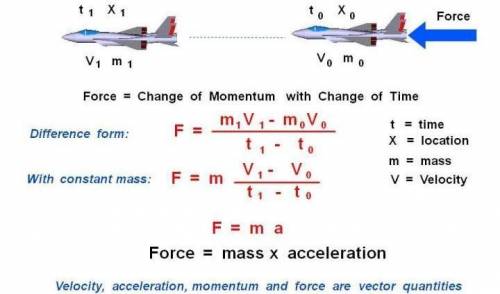
Physics, 26.04.2020 03:05 parapraxis
The mass of a regulation tennis ball is 57 g. The ball is in contact with the tennis racket for 30 ms. The ball was served at 73.14 m/s. If the opponent returned the serve with a speed of 55 m/s, what force did he exert on the ball, assuming only horizontal motion?

Answers: 1


Another question on Physics

Physics, 21.06.2019 22:30
Fft review: linspace, fs, fftshift, nfft 1. generate one second of a cosine of w,-10hz sampled at f, = 100hz and assign it to x. define a tt as your time axis 2. take 64 points fft. 3. as you remember, the dft (which the fft implements) computes n samples of s2t where k-0,1,2, n -1. plot the magnitude of this 64-points fft at range 0 to 63, what do you think of this graph? 4â·to get the x-axis into a hz-frequency form, plot this 64-points fft between-50 to 50 (the 100hz sampling rate) and have n-points between them. 5. according to your figure, what frequency is this cosine wave at? 6. remember that the fft is evaluating from 0 to 2ď€. we are used to viewing graphs from-ď€ to ď€. therefore, you need to shift your graph. 7. now according to your shifted graph. what frequency is this at? 8. note that the spikes have long drop-offs? try a 1024-point dft. note that the peak is closer to 10 and the drop-off is quicker. although, now sidelobes are an issue
Answers: 2

Physics, 22.06.2019 02:50
What is required for an electric charge to flow through a wire? zero resistance in the wire a balance of electric potential high resistance in the wire a difference in electric potential
Answers: 1

Physics, 22.06.2019 16:40
Atriangle with equal sides of length 10 cm has -2.5-nc charged objects at each corner. part a determine the direction of the electrical force exerted on the object at the top corner due to the two objects at the horizontal base of the triangle. determine the direction of the electrical force exerted on the object at the top corner due to the two objects at the horizontal base of the triangle. horizontally rightward vertically downward vertically upward horizontally leftward
Answers: 1

Physics, 22.06.2019 23:00
Imagine an isolated positive point charge q (many times larger than the charge on a single proton). there is a charged particle a (whose charge is much smaller than charge q) at a distance from the point charge q. on which of the following quantities does the magnitude of the electric field created by charge q at particle a's position depend? check all that apply.the type of the charge on the charged particle athe relative orientation between q and a (while the distance between q and a is fixed)the specific location of the charged particle a (while the distance between q and a is fixed)the amount of the charge on the point charge qthe specific location of the point charge q (while the distance between q and a is fixed)the distance between the point charge q and the charged particle athe amount of the charge on the charged particle a
Answers: 3
You know the right answer?
The mass of a regulation tennis ball is 57 g. The ball is in contact with the tennis racket for 30 m...
Questions


Social Studies, 31.01.2020 23:59


Mathematics, 31.01.2020 23:59

Mathematics, 31.01.2020 23:59


Biology, 01.02.2020 00:00


English, 01.02.2020 00:00

English, 01.02.2020 00:00

Mathematics, 01.02.2020 00:00


Spanish, 01.02.2020 00:00


Mathematics, 01.02.2020 00:00

Geography, 01.02.2020 00:00

Mathematics, 01.02.2020 00:00

Mathematics, 01.02.2020 00:00

History, 01.02.2020 00:00




